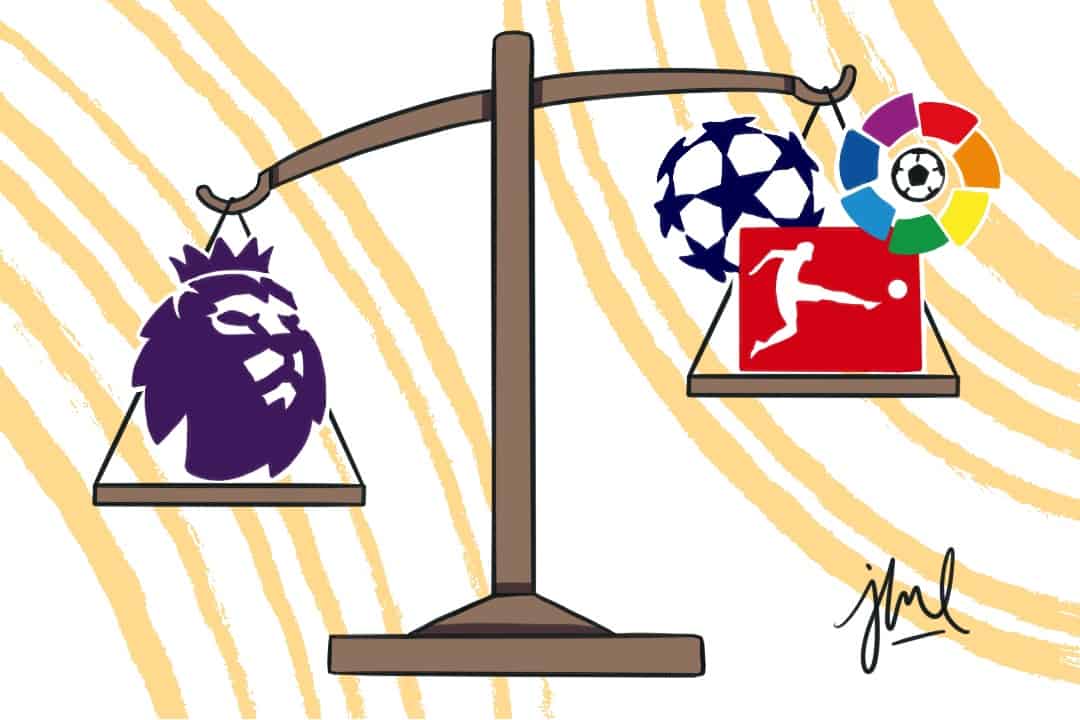As the 2021–2022 football season comes to a close, the classic question arises once again: which top European league is the most difficult to win? Sports fans are notorious for debating to the extreme, and it seems like everyone and their mom has an opinion on the game. Here’s mine.
For those who are unaware, the top five European leagues are the Premier League in England, La Liga in Spain, Serie A in Italy, the Bundesliga in Germany, and Ligue 1 in France. To determine which league is the hardest to play in, I’ll be looking at how well each league’s teams fare in European competitions, as well as analyzing this season’s title race for each league.
The first metric is the ranking that the Union of European Football Associations (UEFA) gives to each country. The UEFA governs football in Europe and organizes competitions like the UEFA Champions League, Europa League, and the newly inaugurated Conference League.
These competitions take teams from across Europe’s top divisions and pit them against each other in a tournament consisting of a group stage followed by a knockout phase. Winning these competitions not only provides bragging rights but also holds significant financial benefits for the teams.
The UEFA determines its rankings through a points system it uses for its European competitions. It allotts points for wins within the group stage, winning the entire group, and advancing far into the knockout bracket.
Once these points are tallied for each team, the total points are divided by the number of teams competing from each league. This gives an average score to each country, which the UEFA calls a coefficient. The total score adds up the coefficients from the past five years to determine how many spots each league receives.
Based on the five-year coefficients, England currently takes the top spot, followed by Spain, Italy, Germany, and lastly, France. In the past five years, English and Spanish teams have comprised eight of the last 10 winners of both the Champions League and Europa League, with Bayern Munich and Eintracht Frankfurt of Germany taking the last two spots.
Looking at the coefficients for just this year, England is first, followed by the Netherlands, then Spain, France, Germany, and Italy. Surprisingly, the Netherlands has the second highest league coefficient due to the performance of teams like Feyenoord and Ajax, but their recent historical performances don’t warrant much reason to believe that they are in competition with the other leagues.
These rankings give a good sense of how each league’s teams compare to one another: English and Spanish teams make deep runs into the competitions, while — with a few exceptions — German, French, and Italian teams have mostly struggled.
Looking at each league’s domestic standings also provides insight into how competitive each league is. The Premier League title race came down to the last matchday, with Manchester City nabbing the top spot from Liverpool by a single point. The case was similar in Italy, with AC Milan scoring a win on the final day to become champions over their rival, Internazionale, by just two points. This newfound success from the Milan teams is a shift from the dominance of Juventus, which had previously picked up nine consecutive winner’s medals.
In Germany, Spain, and France, the title was decided several weeks before the last day of the season, with point gaps of eight, 13, and 15 points, respectively. This year in Spain, Real Madrid were far and above the most dominant team. Usually, however, the title race is much closer, with Barcelona and Atletico Madrid being the only title winners in the past five years.
The same cannot be said for Germany and France; in the former, Bayern Munich have won a staggering 10 titles in a row, and France’s Paris Saint Germain (PSG) have bounced back from a disappointing campaign last year to win their eighth title in the last 10 seasons.
The stats from approximately the last five years show how the English and Spanish leagues are by far the most competitive domestically, and have the most successful clubs in Europe. The recent surge in competition in Italy is exciting, while in Germany and France it doesn’t seem like anyone will be able to knock Bayern or PSG off their respective thrones, making these two leagues virtually non-competitive.
The UEFA coefficient system has it spot on, with the Premier League being the most competitive league, followed by La Liga, Serie A, Bundesliga, and finally Ligue 1.


